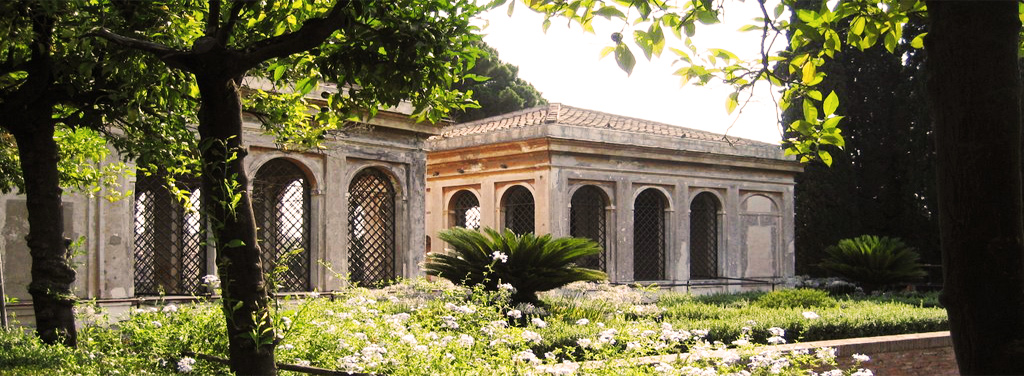
Vegetable Gardens on the Palatino Hill
This post is also available in:
 Italiano (Italian)
Italiano (Italian)
Also known as Horti Farnesiani, Orti Farnesiani, Giardini Farnese, or Giardini di Farnese, these gardens overlook the Roman Forum from the northern height of the Palatino Hill. Cardinal Alessandro Farnese – nephew of Pope Paulus III – built them in 1550 to celebrate, in an impressive endeavor, his strong political and institutional status. The most ancient part of the gardens was actually designed by architects Jacopo Barozzi da Vignola, and Giralomo Rainaldi.
A cave-like portion was built by Odoardo Farnese, between 1612 and 1626, then turned into a Nymphaeum of the Rain, a terrace adjacent to the ruins of Domus Tiberiana, and the first big aviary.
In 1628, following his marriage to Margherita de’ Medici, Odoardo Farnese built a new aviary opposite the first one,
two stairways with three ramps, leading to the upper floor of the gardens, a system of overlapping and terraced elements (including Teatro del Frontone, and Casino dei Fiori, with painted loggias), a Secret Garden, and a wild area enclosed within high walls. Many new plants and exotic birds were added as well.
In the mid-1600s, Ranuccio II Farnese moved to Parma, thus neglecting the gardens which were then turned into the “Reale Azienda Farnesiana” farm. Filippo V di Borbone eventually inherited them, after marrying the last descendant of the Farnese, Elisabetta.
At the beginning of the 1800s, the French administration in Rome had the aviaries remodeled with neoclassical style.
Horti Farnesiani soon became a sort of romantic garden among the ruins. In 1861, the French emperor Napoleon III bought the Horti Farnesiani from Francesco II di Borbone, to carry out excavations: the official gardens were completely destroyed, while fountains and buildings were preserved or partially modified; the aviaries became the excavation director office. Very little was saved of the original Villa Farnese.
The Italian Government bought the gardens in 1870, and at the beginning of the XX Century archeologist Giacomo Boni began digging again after his predecessor Lanciani, taking also care of the whole area and repopulating it with exotic essences. When he died, he wanted to be buried right here.
After a long period of neglecting, the Horti were closed to the public in 1988. Following an important restoration that began in 2013, five years later the aviaries and a portion of the garden were reopened. To recreate the charm of the ancient gardens, laurels, cypresses, yews, citrus, vines, and Damask roses were planted.
The path through the system of ramps, arcades and terraces, Teatro del Fontanone, Casino dei Fiori, and the water system were also restored.
This post is also available in:
 Italiano (Italian)
Italiano (Italian)
Contatti
Via San Gregorio 4 - 00186 Roma(RM)
+06 39967700
http://www.archeoroma.beniculturali.it
Altre info
tutto l'anno, tutti i giorni tranne: 1 gennaio, 1 maggio e 25 dicembre
Dalle 8.30 alle 16.30-19.15 a seconda dei mesi




